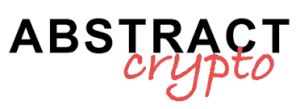Over the course of the last year, the Avalanche (AVAX) network has experienced a growing wave of liquidity in the form of stablecoins, recording an increase of over 70%, rising from 1.5 billion to over 2.5 billion dollars in circulation as of March 31, 2025.
This growth, highlighted in an official post on X by the Avalanche foundation, would seem, at first glance, a clear sign of increased investor confidence and imminent bull pressure on the market.
Stablecoins, as known, function as a bridge between the fiat economy and the crypto economy. Their increase is usually interpreted as a possible prelude to new investments, a positive “whiplash” for the blockchain ecosystems that host them.
However, the current situation of the network’s native token, AVAX, tells a very different reality.
A significant increase in stablecoins on Avalanche: and for AVAX?
Despite the influx of new liquidity, the price of AVAX has followed a decidedly negative trend. In the last twelve months, the token has lost almost 60% of its value, trading around 19 dollars.
A decline that clashes with the growth of stable resources present on the network, creating an apparent contradiction.
According to Juan Pellicer, senior analyst at the blockchain analysis platform IntoTheBlock, this discrepancy is not so surprising when considering the nature of the new liquidity.
A large portion of the funds in stablecoin, in fact, does not seem to be actively employed in the DeFi of Avalanche sector, which should instead constitute the core of the demand for AVAX.
Pellicer emphasizes that a “substantial portion” of the new inflows in stablecoin is represented by Tether (USDT) introduced on the network via bridge, but not really used.
These funds appear more like inactive treasury capitals, rather than as dynamic resources engaged in activities such as loans, swaps, or staking.
Which would normally generate a direct demand for AVAX, used as gas fee and collateral in the DeFi protocols integrated into the network.
In other words, the mere presence of stablecoin does not automatically generate a beneficial effect on the value of the AVAX token, unless these funds are put to work concretely within the ecosystem.
“`html
Macroeconomic uncertainties: a weight on the entire market
“`
The decline of AVAX is not an isolated case, but fits into a broader context of market correction in the crypto sector and increasing caution from investors.
Geopolitical uncertainty and global economic concerns, particularly related to the situation in the Stati Uniti, are undermining confidence in beni ad alto rischio.
President Donald Trump, in fact, announced on April 2 the imposition of new reciprocal tariffs on imports, a move designed to reduce the current U.S. trade deficit estimated at 1.2 trillion dollars.
This produces a visible pressure on traditional and digital markets, which at the moment struggle to generate a clear bull inversion.
Despite the climate of uncertainty, the analysts from the renowned platform Nansen offer a glimmer of hope. According to their projections, the probability that the crypto market will reach a definitive low by June is 70%.
Overcoming the current phase of commercial negotiation, they explain, could free the market from the psychological pressure that grips it and allow it to regain a certain vitality.
Aurélie Barthere, principal analyst at Nansen, observes how the market could find a path to recovery as soon as the tensions related to the more difficult negotiations have eased.
This process should provide a more stable environment for digital and non-digital assets, fostering new waves of trust and capital.
Static markets awaiting developments
Both the US stock market and the cryptocurrency sector are currently showing signs of technical stagnation.
In their research published on April 1st, the analysts at Nansen highlight that the indici azionari principali and Bitcoin have not managed to climb back above their respective 200-day moving averages.
On the other hand, the shorter moving averages are falling, indicating persistent technical weakness.
These signals indicate that, at the moment, both traditional and digital markets are waiting for an external push to break the bear trend.
Simplifying: nobody wants to take the first step when uncertainty dominates, and this is fully reflected in the behavior of users on Avalanche.
The case of Avalanche demonstrates how the accumulation of passive liquidity, if not accompanied by a real use within the ecosystem itself, risks remaining sterile.
The network continues to attract resources, but the absence of active use in DeFi services is depriving AVAX of that fuel which would make it more appealing and valued by the bull and bear markets.
While the eyes of investors remain focused on the upcoming international developments, Avalanche will have to face the challenge of converting the silent mass of its stablecoins into an operational engine, capable of revitalizing demand and confidence in its token.
If he can do it, his financial momentum can finally find a concrete outlet. Otherwise, he will remain a liquid but immobile giant, waiting for better times.


